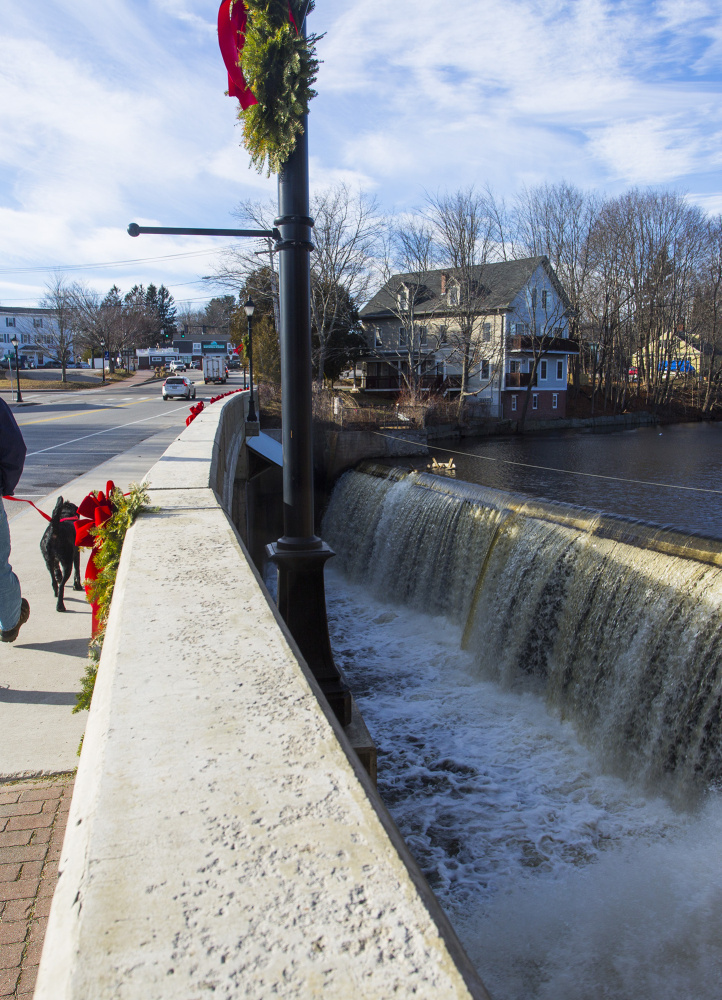One spring day, years ago, I stood in the cold, clear Mousam River with a fly firmly in my hand. Mesmerized by the picture-perfect river, I was distracted by the flash of a fish darting by my feet. I glimpsed enough to recognize it as an American shad returning to spawn. The shad’s journey was nearly complete, as the imposing Kesslen Dam in downtown Kennebunk was only a couple hundred yards upstream.
Living on Brown Street in Kennebunk then, a stone’s throw from the Mousam River, I treasured this flicker of nature passing inches from me. Though the shad would soon reach an insurmountable barrier, I was reminded of the greater potential the Mousam has, which extends well beyond the Kesslen Dam.
I no longer live in Kennebunk. In fact, I live and fish over 2,000 miles away in Colorado. Even as I cast a line into the sparkling Roaring Fork River, however, I often think of the ecological jewel that the Mousam River is.
OPPORTUNITY
Recently, I learned about the dam removal opportunity that sits before Kennebunk Light and Power. Three dams, the Kesslen, Twine and Dane Perkins, are owned by KL&P. These dams could be relicensed and continue providing residents a small amount of power, or removed to restore a freer-flowing river.
There are over 300 miles of streams within the Mousam River watershed. Only 1 percent of these 300 miles connect to the ocean. In fact, the Mousam is the largest river in Maine with absolutely no fish passage. Fish migration is critical to coastal river ecosystems.
It is clear to me, a trained environmental engineer, that the removal of these three dams makes great sense for Kennebunk and this wonderful river.
Economically, dam removal would be the more affordable option, with costs estimated around $2.3 million. In contrast, relicensing the dams would cost between $8.8 million and $11.7 million. It would be reasonable to believe that the greater capital expenses for relicensing would drive up electricity prices for customers. Furthermore, the dams provide only 1.3 to 5 percent of KL&P’s power. Is it wise to incur such large capital expenses to retain such a minute portion of an energy portfolio?
The lower Mousam River is a well-enjoyed stretch of recreational water. Canoeing, kayaking and fishing are just some of the common leisure activities below the Kesslen Dam. Dam removal could extend these recreational opportunities upriver. Slack water would be replaced with riffles, runs and pools, a river full of life.
Fishing opportunities will particularly improve, as aquatic species will inhabit a longer stretch of river.
A healthy, thriving river has the potential to be a great draw for locals and tourists who enjoy water recreation. It would also yield an economic benefit for the town. The improved fishing opportunities alone would attract anglers with money to spend, potentially generating jobs.
Recalling another day on the Mousam, I spent a fall afternoon watching an eagle sit majestically in the trees across the river. It suddenly left its perch to scour the river for fish. Watching the eagle in flight had a transformative impact on me.
Eagles need fish, and fish need habitat. Removing the three dams has the potential for an enormous positive environmental impact. Shad, sea-run trout, alewives, eels and other species are stopped when they reach the 14-foot concrete dam at Route 1. Restoring these species to their native reaches would result in a vital piece of the ecosystem restored.
A HEALTHIER WATERSHED
Dam removal on other rivers has shown how beneficial it can be for the entire system. Capitalizing on the opportunity to remove the dams along the Mousam River will return long-missing pieces to the system, a key step toward a healthier watershed.
To be sure, as this river transforms, some fear property values could decline. But researchers Lynne Y. Lewis at Bates College (who focused on Kennebec River dams) and Bill Provencher at the University of Wisconsin-Madison investigated the impact of small-dam removal on properties bordering such projects. Their studies found that values are actually higher for properties close to a river but not near a dam.
The Mousam is a river that deserves to flow free. Retaining the minuscule amount of power that these dams provide simply doesn’t outweigh the benefits of returning this system to its natural state. I would encourage Kennebunk Light and Power to remove these dams to allow this river to flourish and benefit the community.
Now a long way from Brown Street, I feel an enduring attachment to the Mousam. It is a very special river that someone in Colorado still thinks about.
Send questions/comments to the editors.



Success. Please wait for the page to reload. If the page does not reload within 5 seconds, please refresh the page.
Enter your email and password to access comments.
Hi, to comment on stories you must . This profile is in addition to your subscription and website login.
Already have a commenting profile? .
Invalid username/password.
Please check your email to confirm and complete your registration.
Only subscribers are eligible to post comments. Please subscribe or login first for digital access. Here’s why.
Use the form below to reset your password. When you've submitted your account email, we will send an email with a reset code.